Border Reivers
Edward I’s bold decision to seize back the ‘Honor of Penrith’ from Scottish rule in 1295 led to three centuries of warring hostility between the two nations − a situation that was not resolved until James VI of Scotland acceded to the English throne and brought about the Union of the Crowns in 1603.
The 14th century in particular witnessed cross-Border raids that resulted in Penrith being plundered and burned on many occasions. On one occasion in 1380, the raiders returned home with more than just their ill-gotten gains − they also brought the dreaded plague into Scotland.
The Scots roved over the country from the feast of St Luke to St Martin’s Day, inflicting upon all the horrors of unrestrained rapine and bloodshed.
Over time, the Anglo-Scottish hostilities degenerated into ruthless family feuds. Between c.1450 and 1610, the border lands of England and Scotland were subject to rule by clans that held allegiance to no-one other than themselves. These clans were known as the Border Reivers (‘reive’ meaning ‘to steal’.)
The Armstrongs, Bells, Elliots and Grahams were among the largest and most notorious of the clan families, with bases on both sides of the border. Feuds could be deadly between the different clans. Scots ransacked the homes of other Scots, and Englishmen robbed their fellow neighbours just as readily as they attacked land and property on the other side of the Border.
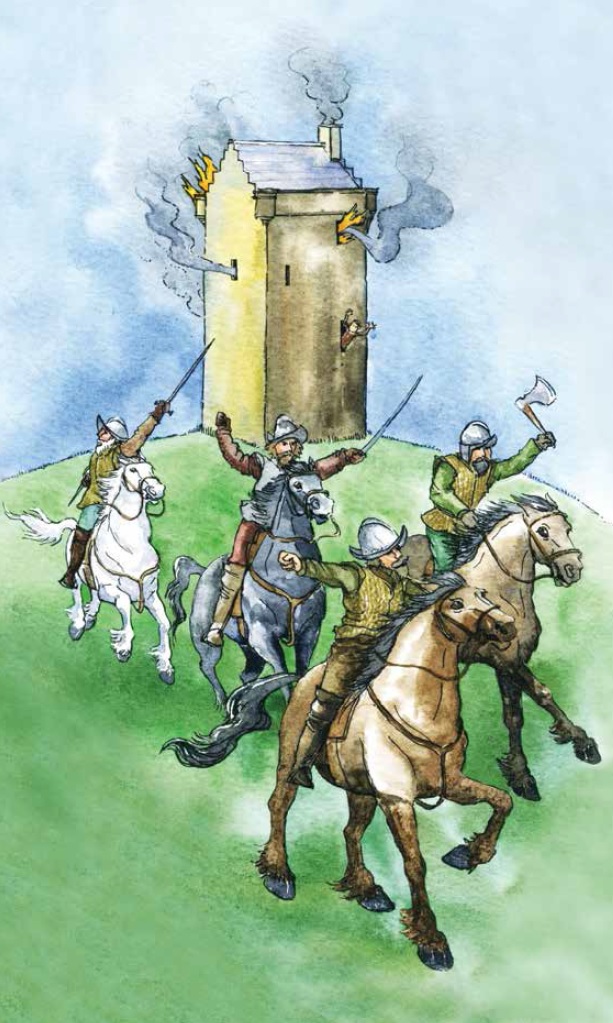
Reconstruction of a Border raid
Juliet Whitworth
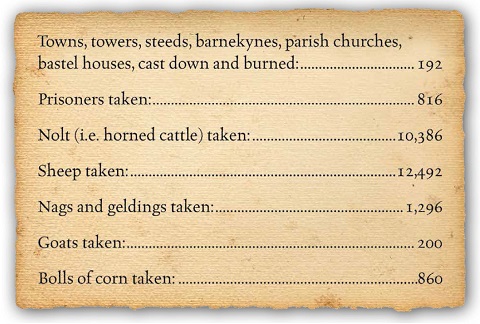
An estimate of the goods taken during a 5-month period in 1543
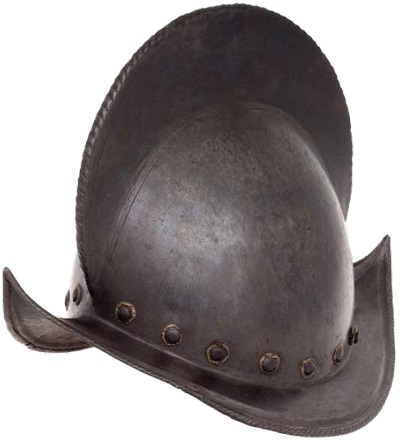
Spanish morion helmet as worn by Border Reivers
© CSG CIC Glasgow Museums Collection
During this period many defensive structures were built to keep families safe during raids. The most notable are pele towers. Constructed with massively thick walls, the towers were usually 3 to 4 storeys high with a battlemented roof. The windowless basement held livestock, whilst above were the living quarters of the family.
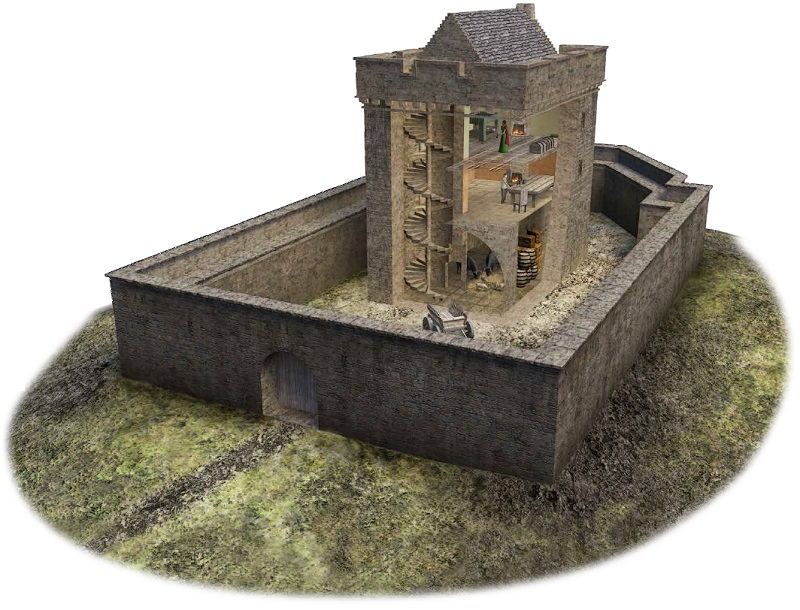
Reconstruction of a pele tower
Julian Baum
By the late 1500s, organised lawlessness was endemic. The English monarchs attempted to impose law and order on the land by appointing Wardens of the Marches. However, this was only partly successful. Following the death of Elizabeth 1 in 1603, the Graham, Armstrong and Elliot clans ‘celebrated’ with one almighty rampage, stealing some 4000 cattle and leaving much of the English/Scots border devastated.
In 1603, James VI of Scotland succeeded to the throne as James I of England. By uniting the two crowns, James was determined to stamp out the practice of reiving once and for all. Thousands of reivers were executed or exiled to Ireland and, finally, after three centuries of rampant lawlessness, the Anglo-Scottish border was at peace.
Today, the descendants of Armstrongs, Bells, Elliots and Grahams and many other reiving families have spread throughout the world, including such famous names as the astronaut Neil Armstrong, President Richard Nixon and the inventor Alexander Graham Bell.
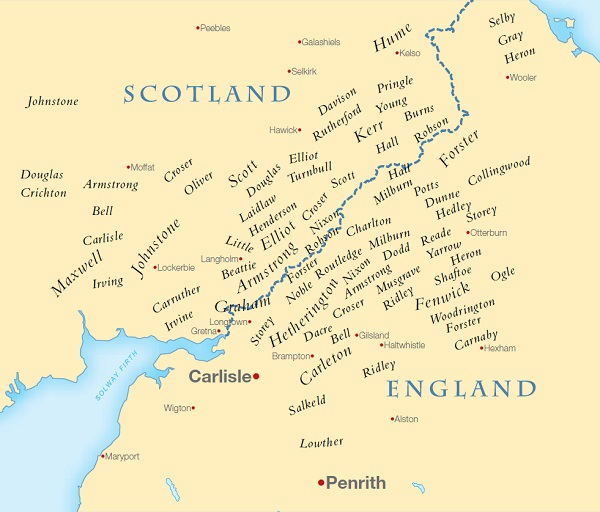
Map showing distribution of Border Reiver surnames.
Based on a map supplied by Tullie House Museum & Art Gallery Trust, Carlisle

